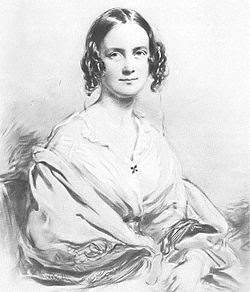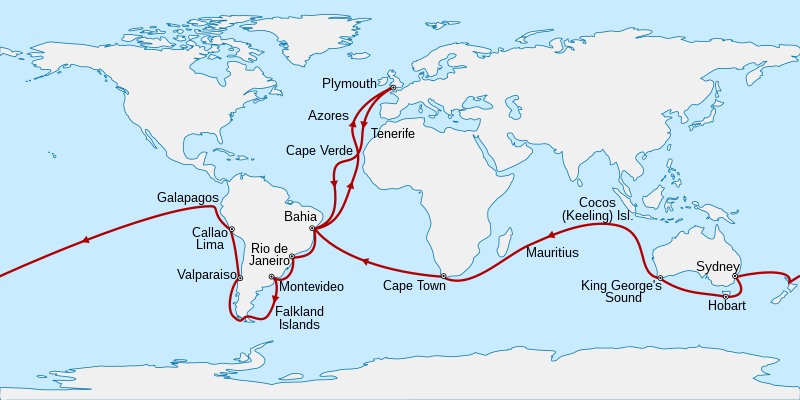 Long before Darwin published his famous book in 1859, he sketched out his thoughts and theory in a brief manuscript that was not discovered until decades later. The original manuscript was later edited and published as The Foundations of the Origin of Species. In this guest essay, Dr. Sara Ellis shares a personal story of a family heirloom - a rare book edited by Darwin's son and inscribed to her great-grandfather in 1909, on the centennial celebration of Darwin.
Long before Darwin published his famous book in 1859, he sketched out his thoughts and theory in a brief manuscript that was not discovered until decades later. The original manuscript was later edited and published as The Foundations of the Origin of Species. In this guest essay, Dr. Sara Ellis shares a personal story of a family heirloom - a rare book edited by Darwin's son and inscribed to her great-grandfather in 1909, on the centennial celebration of Darwin.Some twenty years ago, my Aunt Elizabeth gave me a cherished family book. I remember her saying that, as the biologist in the family, I was the one who ought to have it. It was small and fragile looking, and the words “by Charles Darwin” were printed on the plain cover. I was duly reverent and thankful, then I promptly stored it on my library shelf. Over the ensuing years, I’ve moved about ten times, and each time I carefully packed that book up along with my textbooks and field guides, and re-shelved it at my next abode.
Inspired by this year’s Darwin celebrations, I decided to take a closer look at my aunt’s gift. The book is entitled The Foundations of the Origin of Species: A Sketch Written in 1842 by Charles Darwin. The first thing I noticed was that it is inscribed to my great-grandfather, Professor W. Hodgson Ellis. It was published in 1909 and presented to him “on the occasion of the celebration at Cambridge of the centenary of the birth of Charles Darwin and the fiftieth anniversary of the publication of On the Origin of Species.” Another Darwin celebration a century ago—this piqued my interest and launched me on my own small voyage of discovery.
Darwin’s son Francis had written the introduction, in which he explained that after the death of Darwin’s wife Emma in 1896, a manuscript had been found “hidden in a cupboard under the stairs which was not used for papers of any value, but rather as an overflow for matter which he did not wish to destroy.” Francis was a Darwin scholar, having published The Life and Letters of Charles Darwin in 1887, and he recognized the significance of this find. It turned out that in 1842—seventeen years before the Origin was published—Darwin had written this 35-page sketch of his emerging theory. Two years later he expanded this outline to more than 200 pages. These two essays became the template for the Origin.
The 1842 sketch was written “on bad paper with a soft pencil.” Much of it was “extremely difficult to read, many of the words ending in mere scrawls and being illegible without context.” Francis deemed the essay to be “more like hasty memoranda of what was clear to himself, than material for the convincing of others.” Despite these difficulties, it was clearly worthy of publication. Francis poured painstakingly through the manuscript, which was filled with insertions, erasures, and notes scrawled on the backsides of pages. His edited version of the book was published by the University Press at Cambridge especially for the 1909 celebration.
The book was presented to the 400 or so scientists and dignitaries who came from 167 countries. There had never been such an event that honored an individual scientist rather than an institution or a nation. The three-day festivities were reported in newspapers worldwide, and this celebration has been called “one of the most magnificent spectacles ever recorded in the annals of science” (Richmond 2006). One reporter noted that the “men’s costumes and ladies’ toilettes made the museum a gathering of beauty and charm. But the suggested mental picture was still more impressive, for here were men and women, known in all lands for their scientific work. It was in a sense a presentation of the scientific world” (Richmond 2006). Today, the lectures, publications, garden parties, banquets, and exhibits of Darwiniana are all documented online at 1909: The First Darwin Centenary. Indeed, it was a grand affair.
 This led me to wonder how my great-grandfather had landed an invitation to this prestigious event. William Hodgson Ellis was a man of science. Born in Derbyshire England in 1845, he eventually made his way to Canada and graduated from the University of Toronto in arts and medicine in 1878. He was appointed professor of Chemistry and later, Dean of Applied Science and Engineering until he retired in 1919. Professor Ellis never practiced engineering or medicine, but was an esteemed member of both professions and became one of the few honorary members of the Engineering Institute of Canada. I may never know his exact connection to the 1909 celebration, but it was likely through a colleague at Cambridge.
This led me to wonder how my great-grandfather had landed an invitation to this prestigious event. William Hodgson Ellis was a man of science. Born in Derbyshire England in 1845, he eventually made his way to Canada and graduated from the University of Toronto in arts and medicine in 1878. He was appointed professor of Chemistry and later, Dean of Applied Science and Engineering until he retired in 1919. Professor Ellis never practiced engineering or medicine, but was an esteemed member of both professions and became one of the few honorary members of the Engineering Institute of Canada. I may never know his exact connection to the 1909 celebration, but it was likely through a colleague at Cambridge.Darwin, F. (editor) 1887. The Life and Letters of Charles Darwin, including an Autobiographical Chapter. (Vol. 1, Vol. 2, Vol. 3).










